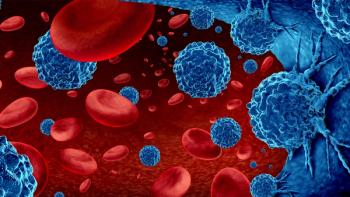
CAR T-Cell Therapy: High Response Rates, High Toxicity Rates

While CAR T-cell therapy is causing landmark changes to difficult-to-treat blood cancer populations, most patients have experienced some adverse events in clinical trials.
CAR T-cell therapy has drastically changed the treatment landscape of patients with relapsed/refractory diffuse large B-cell lymphoma (DLBCL) — a patient population that traditionally has been difficult to treat and had poor outcomes.
“CAR T-cell represents new treatment for diffuse large B-cell lymphoma in the relapsed/refractory setting,” said Andrew D. Zelenetz, MD, PhD, medical oncologist and medical director of quality informatics at Memorial Sloan Kettering Cancer Center.
“As a result, it’s been included in the NCCN guidelines for transformed follicular lymphoma, transformed marginal zone lymphoma, and for diffuse large B-cell lymphoma, as well as refractory diffuse large B-cell lymphoma.”
Zelenetz recently discussed CAR T-cell therapy for this patient population at the NCCN 2020 Virtual Congress on Hematologic Malignancies.
ZUMA 1: Axicabtagene Ciloleucel
Axicabtagene ciloleucel (Yescarta) proved its efficacy in the ZUMA1 trial, which included, among others, 77 patients with relapsed/refractory DLBCL who failed to achieve remission after second-line therapy.
The CAR T-cell treatment was efficacious in the study, presenting a 74% objective repose rate and a median duration of response of 6 months.
“The better your T cells expand after infusion, the more likely you are to have an ongoing reponse,” Zelenetz explained. “Interestingly, at 24 months, among the responders, 66% of the patients still have detectable CAR T cells that are circulating.”
However, while the therapy was effective in fighting cancer, it also had a high rate of toxicities, with nearly all patients experiencing some kind of adverse event (AE). Further, one-third (33%) of patients on the trial had a grade 3 or 4 neurologic AE, and 10% experienced grade 3 or 4 cytokine release syndrome.
JULIET: Tisangelecleucel
The JULIET trial had a similar population of heavily pretreated patients, but this study was analyzing the efficacy of another CAR T-cell product, tisangelecleucel (Kymriah).
Here, there was an objective response rate of 52%, with 40% of patients achieving a complete response.
But, once again, there were some serious AEs. “If we look at safety, not surprisingly, every patient had some adverse event. Serious adverse events were seen in 65% of patients,” Zelenetz explained.
Major Toxicities
When treating patients with CAR T-cell therapy, the 2 major AEs that oncology nurses should look out for are cytokine release syndrome and neurotoxicity.
Symptoms of cytokine release syndrome — which is when a patient’s body releases too many cytokines into the bloodstream – include high fever, low blood pressure, tachycardia, weight gain, and decrease in protein/albumin. The adverse event typically responds to toclizumab, with or without corticosteroids.
Neurotoxicities, on the other hand, may not respond to treatments. Symptoms can be subtle, such as difficulty finding words, or more severe, like cerebral edema and seizures. Unfortunately, they may not respond treatments.
“Most often, this is a reversible syndrome, though there have been some toxicities reported,” Zelenetz said. “It’s not clear what — if any – treatments are really effective.”
Newsletter
Knowledge is power. Don’t miss the most recent breakthroughs in cancer care.

















































































